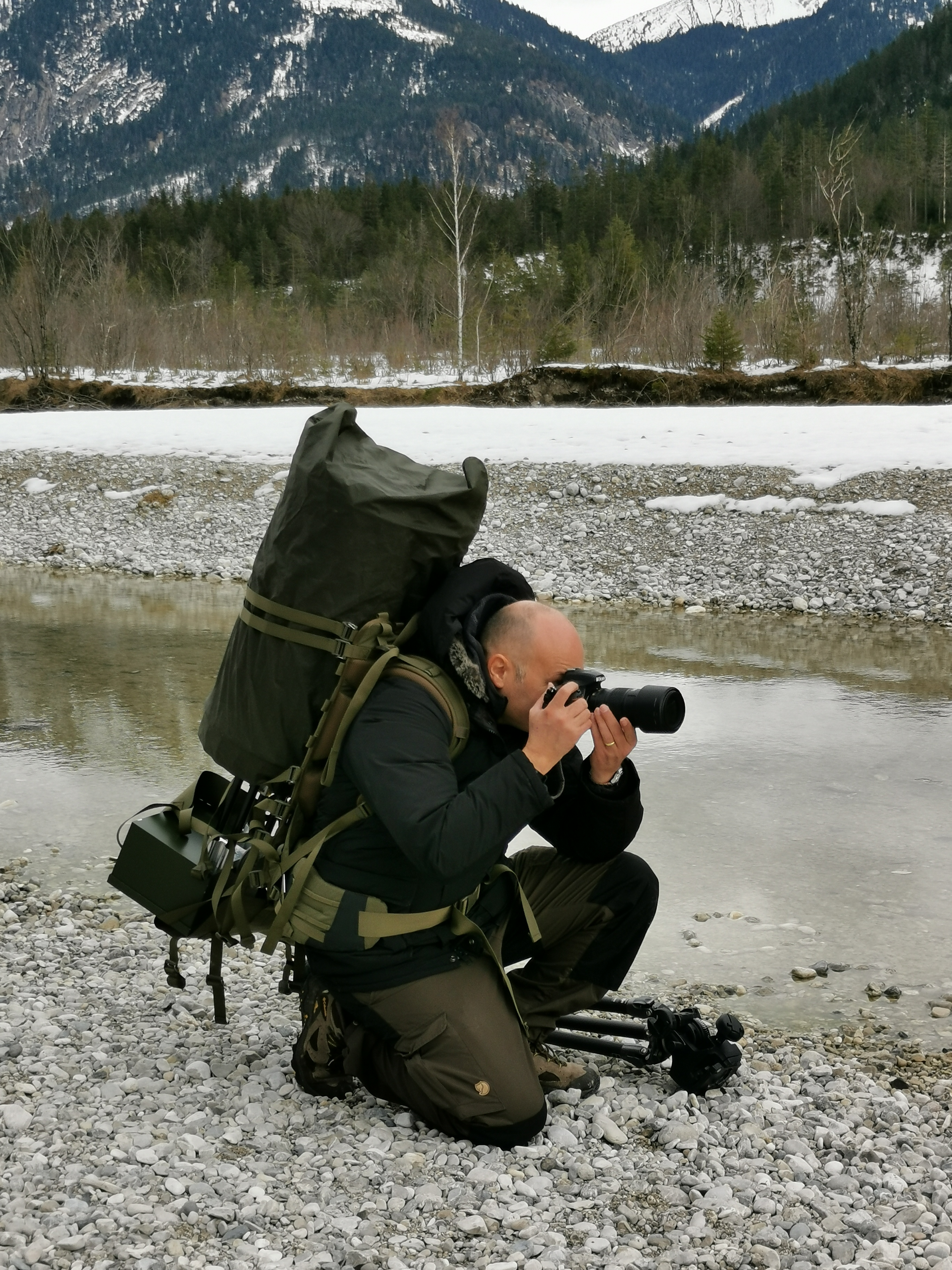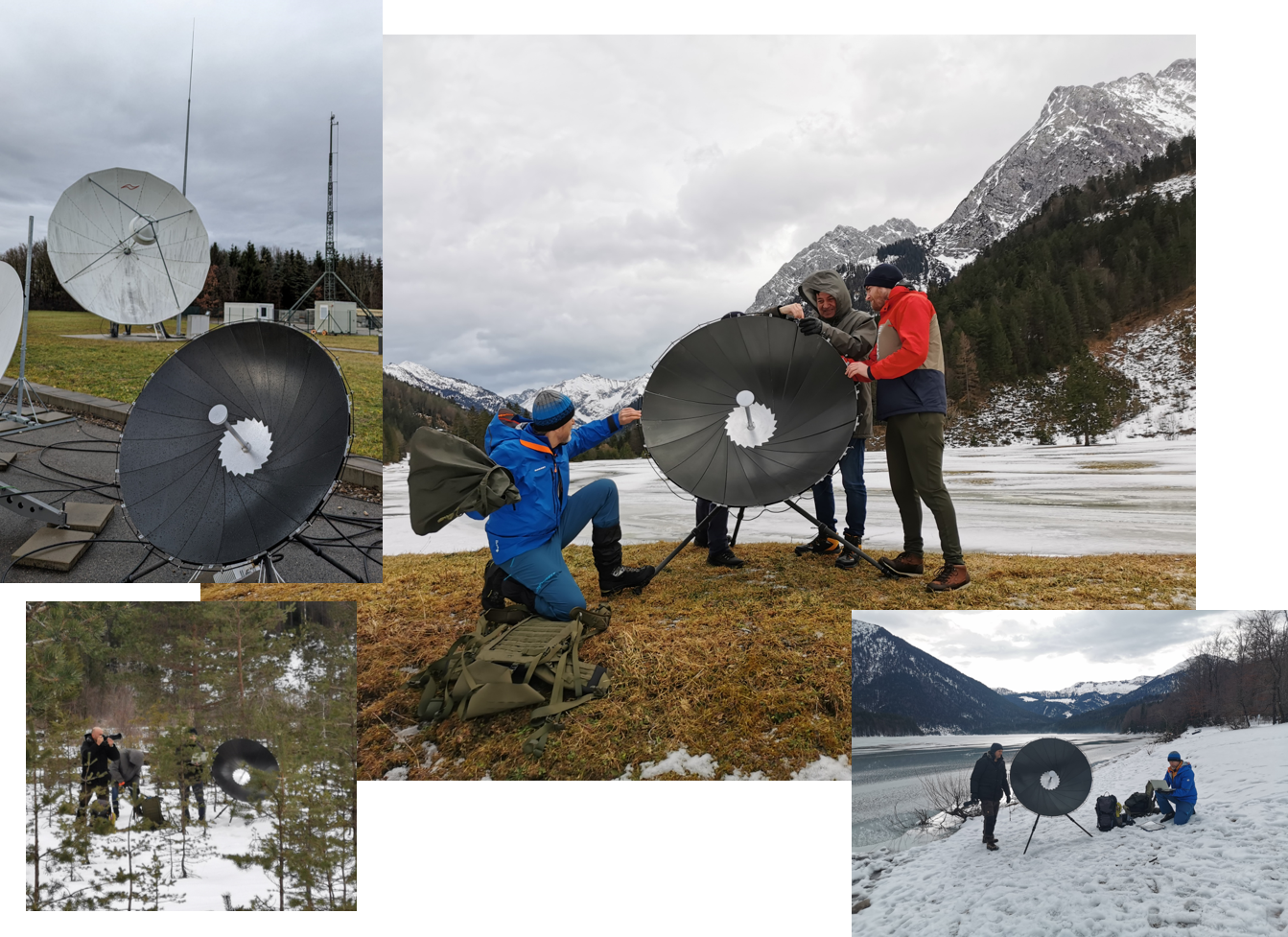January 2024
KEAN II passes the acid test
KEAN II passes the acid test at the University of the German Armed Forces and in the field
KEAN, the integrated deployable lightweight manpack complete antenna from HPS and its development partners, has taken a decisive step forward in the KEAN II (Second Generation) version: it passed the tough link test at the University of the German Armed Forces in Munich in December 2023 and the handling test in the field. This brings the goal of the joint HPS project much closer: the development of a complete system for bidirectional satellite communication based on preliminary developments already carried out by HPS and these specifications:
- Conformance to satellite operators (e.g. EUTELSAT, INTELSAT)
- Ku-band, 1.2 m diameter, also X- and Ka-band capable
- Including communication system, electronics, battery, tripod, backpack carrying system
- Total weight <20 kg
- Commissioning in under 15 minutes from backpack transport to satellite link
- Innovative, cybernetic folding mechanism based on the opening and closing of flowers
- Design and definition of components and production processes suitable for series production for a rapid transition to series production in large quantities.
Partners in the project are:
- The system supplier MTEX (Wiesbaden) with a focus on ground stations and electronics.
- The start-up Blackwave (Ottobrunn) with the economical series production of complex carbon components.
- The Chair of Carbon Composites (LCC) at the Technical University of Munich for the design of innovative extremely lightweight reflector fins.
- The Bundeswehr University for defining the user requirements and carrying out the antenna link tests with satellites.
The additional antenna deployment tests in rough terrain in the Bavarian Alps were closely monitored from the air by camera-guided drones; they provided complete documentation of the challenges, but also of the success of these tests. Videos are available at the YouTube Channel. Particular attention was paid to features and elements such as these during the tests:
- Wearing comfort off-road (walking and running) with different body sizes
- Assembly and disassembly over time in rough terrain (bushes, gravel, snow)
- Speed of unfolding and folding
- Handling by untrained test persons
- Wind load compatibility
- Handling in cold conditions (requirement: from -30o C to +55 o C)
- Robust construction
The target markets for applications of this completely new technology for communication via satellite, especially on X-, Ku- and Ka-band, cover all three conceivable directions:
- commercial, such as journalistic reporting from rough terrain
- institutional, such as rescue and disaster relief operations
- military, such as for small special forces operating independently of vehicles without a direct connection to the base of fully equipped large units
- scalable up to 3.6 m, also for mobile transportation on small vehicles.
Beyond the technical successes, KEAN II is currently growing wings from a completely different direction: the European Commission’s major IRIS2 project to establish absolutely secure connectivity via a dedicated multi-orbit constellation of several hundred satellites from LEO to GEO is giving a significant boost to all those application scenarios that were previously considered to have only seen very hesitant development due to their dependence on non-European constellations and individual satellites. This applies in particular to the institutional and military markets, both of which are now growing into larger dimensions.
The last stage of development was funded by the German Aerospace Center (DLR) as part of the ILKA project with funds from the Federal Ministry of Economics and Climate on the basis of a decision taken by the German Bundestag.


